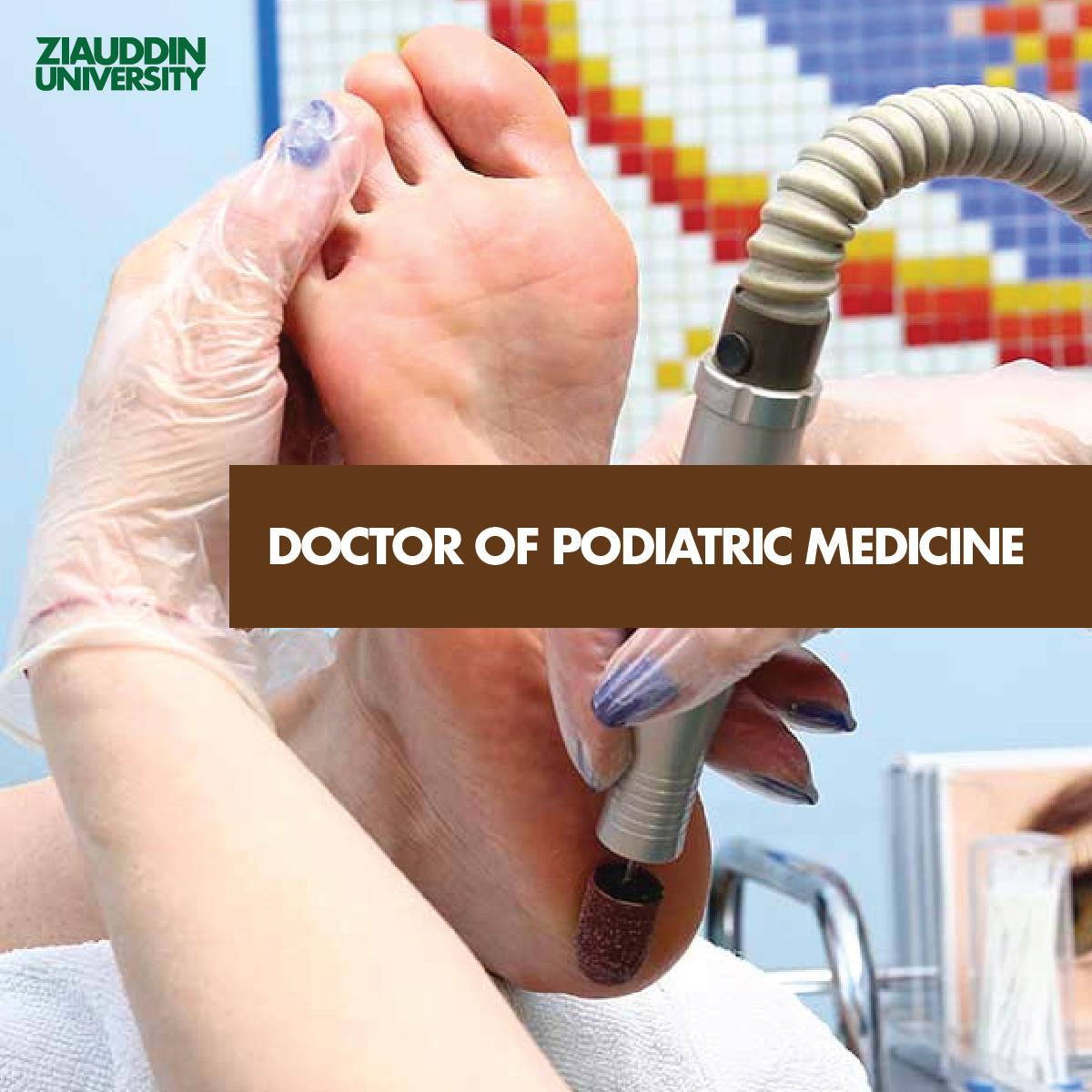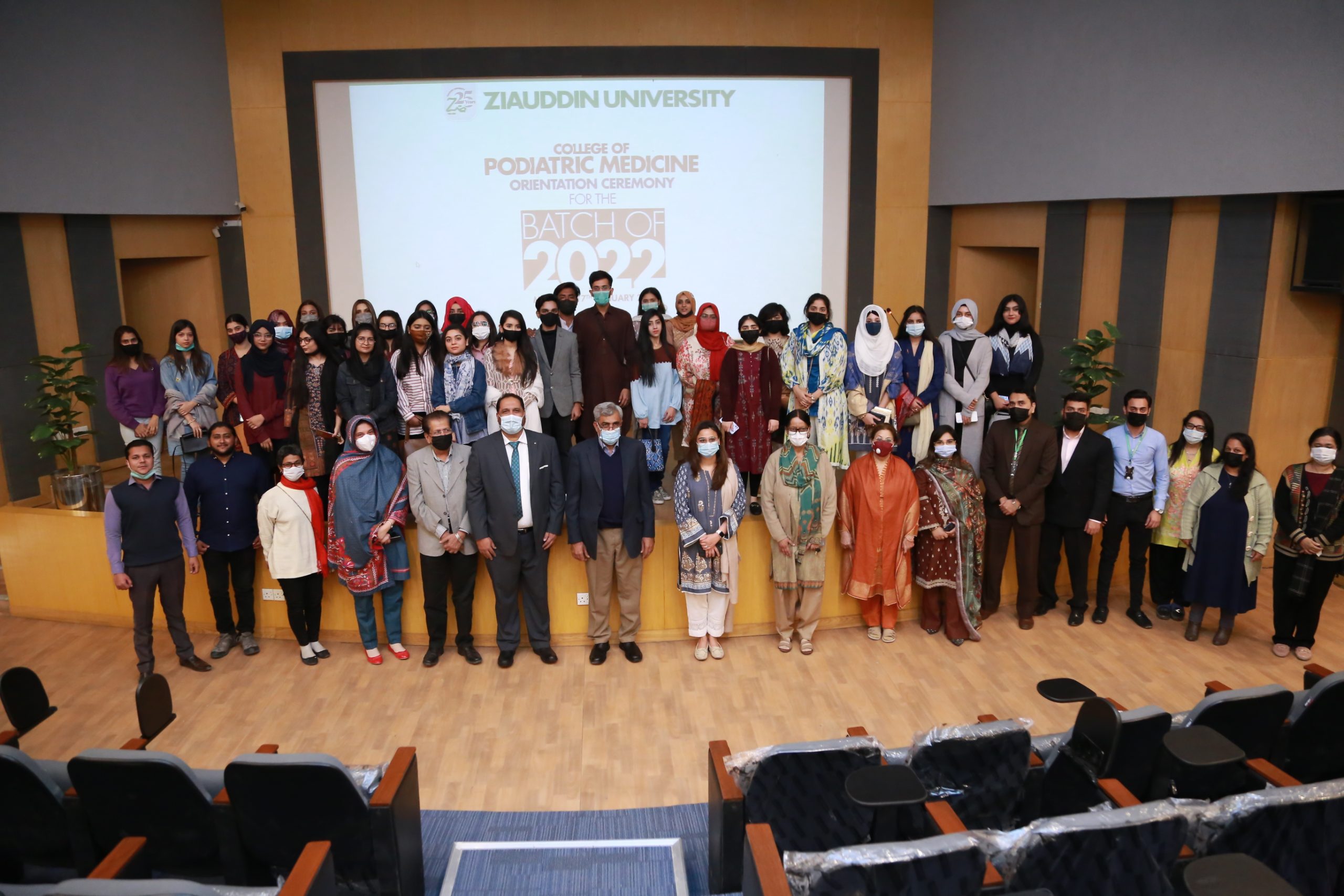College of Podiatric Medicine
- Introduction
- Programmes
- Faculty
- News and Events
A podiatrist is a Doctor of Podiatric Medicine (DPM), known also as a podiatric physician or surgeon, qualified by their education and training to diagnose and treat conditions affecting the foot, ankle and related structures of the leg.
When treating patients, this system is also known as the lower extremity. Podiatric physicians are uniquely qualified among medical professionals to treat the lower extremity based on their education, training and expertise. Podiatrists are defined as physicians by the federal government.
A DPM is a specialist in the prevention, diagnosis, and treatment of lower extremity disorders, diseases and injuries. A podiatric physician works independently, utilizes x-rays and laboratory tests for diagnostic purposes, prescribes medications, orders physical therapy, sets fractures, and performs surgery. As part of a healthcare team, the DPM works closely with other health professionals to treat and control the disease.
Within the profession, podiatric physicians can specialise in a variety of areas such as surgery, orthopedics, or public health. Besides these certified specialties, podiatrists may practice a subspecialty such as sports medicine, pediatrics, dermatology, radiology, geriatrics, or diabetic foot care. Podiatric physicians are the only doctors to receive specialised medical and surgical training, and board certification in the care of the lower extremity.
What does a Doctor of Podiatric Medicine do?
Practitioners of podiatric medicine treat a variety of ailments and employ innovative techniques to improve the overall well-being of patients. The Doctor of Podiatric Medicine (DPM) is a vital member of the healthcare team. He or she is often the first to detect symptoms of diabetes or cardiovascular disease because of the human foot’s interrelation with the rest of the body.
On an average day a DPM may:
- Provide individual consultations to patients concerning the continued treatment of disorders and preventive foot care.
- Diagnose foot ailments such as tumors, ulcers, fractures, skin or nail diseases, and congenital or acquired deformities such as weak feet and foot imbalance.
- Use innovative methods to treat conditions such as corns, calluses, bunions, heel spurs, ingrown toenails, arch problems, shortened tendons, cysts, bone disorders, and abscesses.
- Design corrective orthotics, plaster casts, and strappings to correct deformities.
- Design flexible casting for immobilisation of foot and ankle fractures, sprains, or other injuries.
- Correct walking patterns and balance, and promote the overall ability to move about more efficiently and comfortably.
- Refer patients to other physicians when symptoms observed in the feet indicate disorders, such as diabetes, arthritis, heart disease, or kidney disease.”
Principal

Dr. Faisal Ali Khan
Assistant Professor

Dr. Murk Fatima

Dr. Mukesh Kumar
Lecturers

Dr. Hafsa Tajwar

Dr. Maryam Imran

Dr. Syed Asad Sibtain

Dr. Malika Haider

Dr. Vineeta
Click here for News & Events
- Accreditation
- HOD Message
- Programmes
- Faculty
A podiatrist is a Doctor of Podiatric Medicine (DPM), known also as a podiatric physician or surgeon, qualified by their education and training to diagnose and treat conditions affecting the foot, ankle and related structures of the leg.
When treating patients, this system is also known as the lower extremity. Podiatric physicians are uniquely qualified among medical professionals to treat the lower extremity based on their education, training and expertise. Podiatrists are defined as physicians by the federal government.
A DPM is a specialist in the prevention, diagnosis, and treatment of lower extremity disorders, diseases and injuries. A podiatric physician works independently, utilizes x-rays and laboratory tests for diagnostic purposes, prescribes medications, orders physical therapy, sets fractures, and performs surgery. As part of a healthcare team, the DPM works closely with other health professionals to treat and control the disease.
Within the profession, podiatric physicians can specialise in a variety of areas such as surgery, orthopedics, or public health. Besides these certified specialties, podiatrists may practice a subspecialty such as sports medicine, pediatrics, dermatology, radiology, geriatrics, or diabetic foot care. Podiatric physicians are the only doctors to receive specialised medical and surgical training, and board certification in the care of the lower extremity.
What does a Doctor of Podiatric Medicine do?
Practitioners of podiatric medicine treat a variety of ailments and employ innovative techniques to improve the overall well-being of patients. The Doctor of Podiatric Medicine (DPM) is a vital member of the healthcare team. He or she is often the first to detect symptoms of diabetes or cardiovascular disease because of the human foot’s interrelation with the rest of the body.
On an average day a DPM may:
- Provide individual consultations to patients concerning the continued treatment of disorders and preventive foot care.
- Diagnose foot ailments such as tumors, ulcers, fractures, skin or nail diseases, and congenital or acquired deformities such as weak feet and foot imbalance.
- Use innovative methods to treat conditions such as corns, calluses, bunions, heel spurs, ingrown toenails, arch problems, shortened tendons, cysts, bone disorders, and abscesses.
- Design corrective orthotics, plaster casts, and strappings to correct deformities.
- Design flexible casting for immobilisation of foot and ankle fractures, sprains, or other injuries.
- Correct walking patterns and balance, and promote the overall ability to move about more efficiently and comfortably.
- Refer patients to other physicians when symptoms observed in the feet indicate disorders, such as diabetes, arthritis, heart disease, or kidney disease.”
Podiatric physicians are devoted to the prevention, diagnosis, and treatment of foot and ankle disorders, diseases, and injuries. They are the only health professionals who exclusively specialise in this area and it’s a field in growing demand. An aging population coupled with an increase in chronic conditions that impact mobility, such as diabetes, means more people are seeking care.
At the heart of the Ziauddin University College of Podiatric Medicine (ZCPM) programme is a rigorous curriculum in the basic medical and clinical sciences mixed with hands-on learning experiences that begin in students’ second year, a full year earlier than other programmes. Students gain clinical experience in a variety of inpatient, outpatient, and specialty facilities in the Clifton area, including in surgery, radiology, wound care, biomechanics, medicine, anesthesia, and, of course, podiatric medicine and surgery. You’ll provide care to patients of all ages and backgrounds and, in line with ZCPM’s mission, connect with and learn from underserved communities as part of our CSR initiative.
Our programme is committed to leading the field in podiatric medical education, patient care delivery experience, clinical outcomes, research, and community service efforts. After you graduate from ZCPM, you’ll be ready to excel in your residency training.
I welcome you to this programme that will lead to a fulfilling and bright future and remain available for any information you may contact us on the provided Email / Contact Number.



